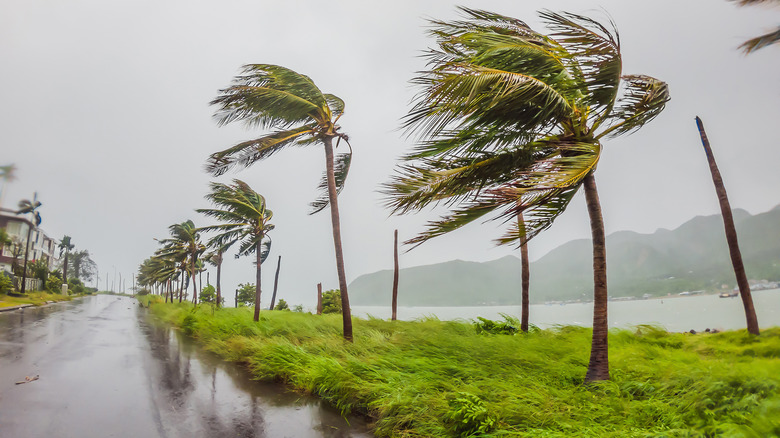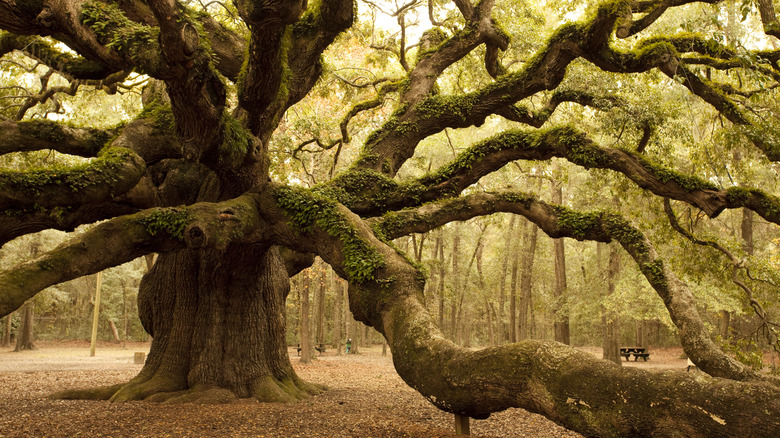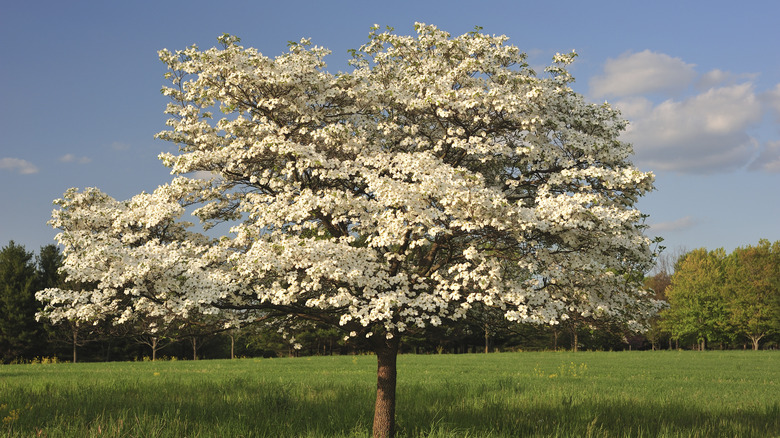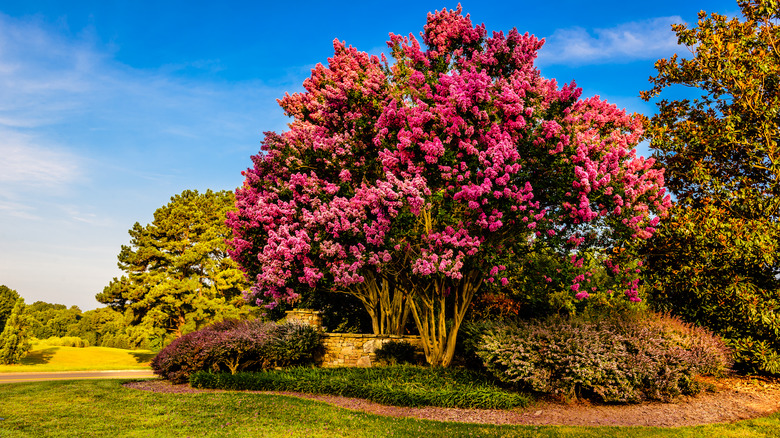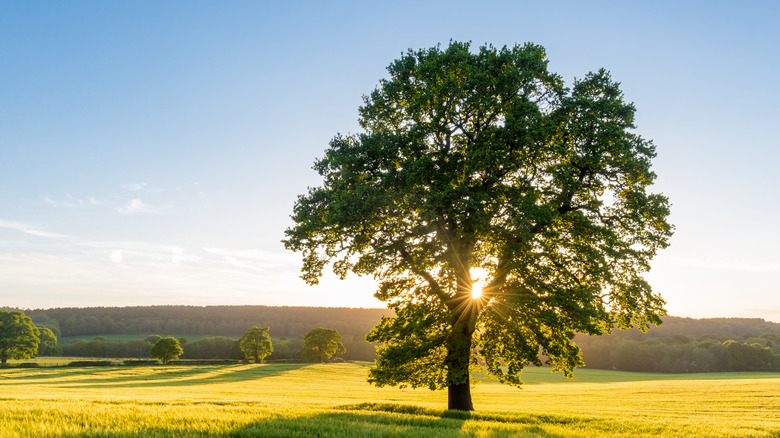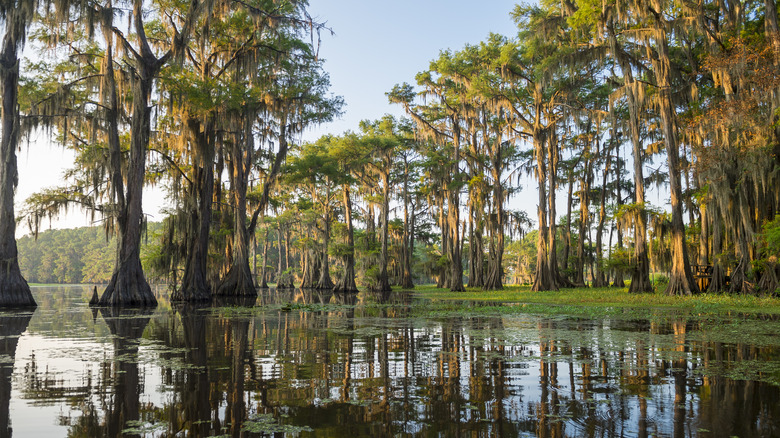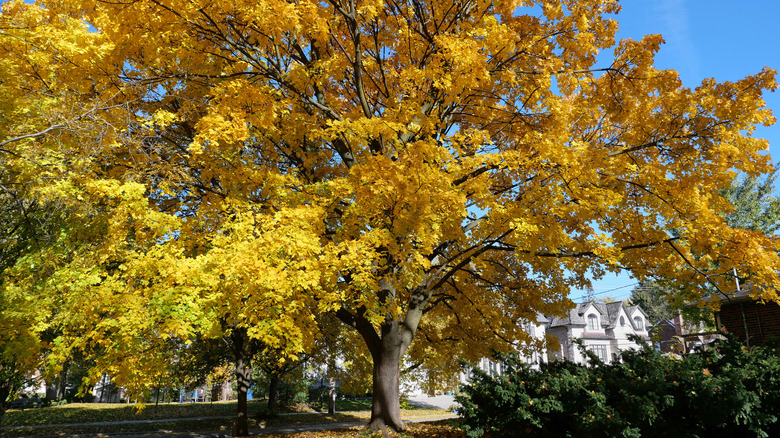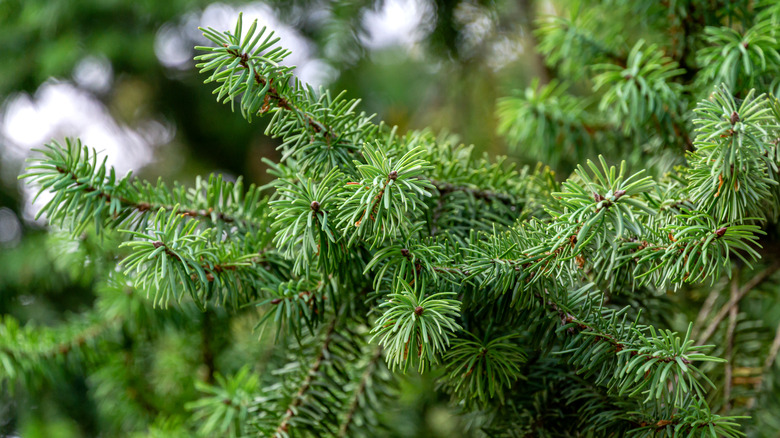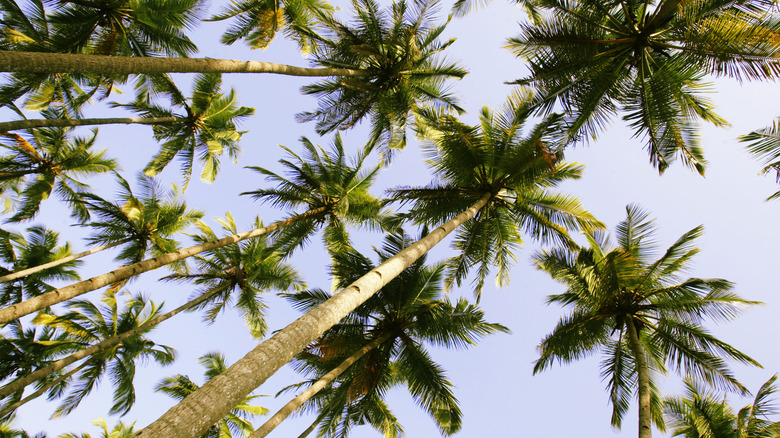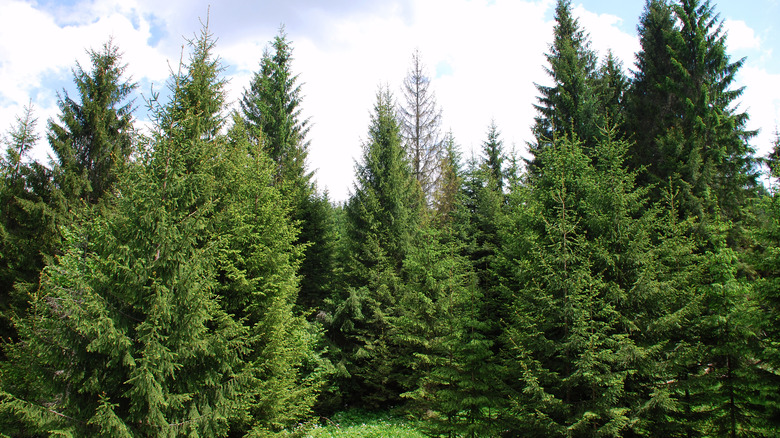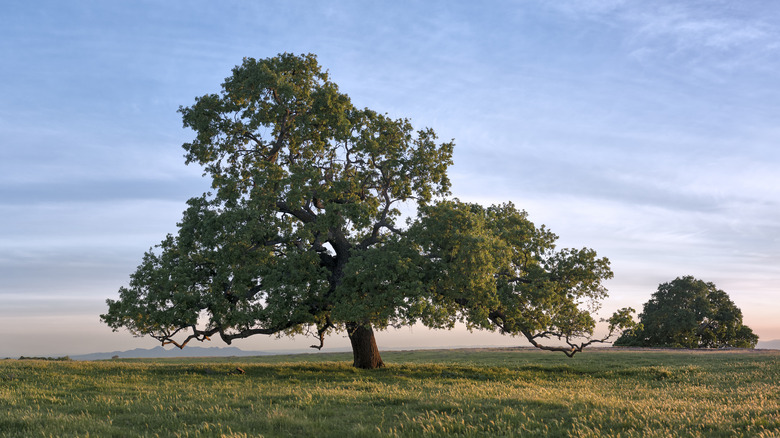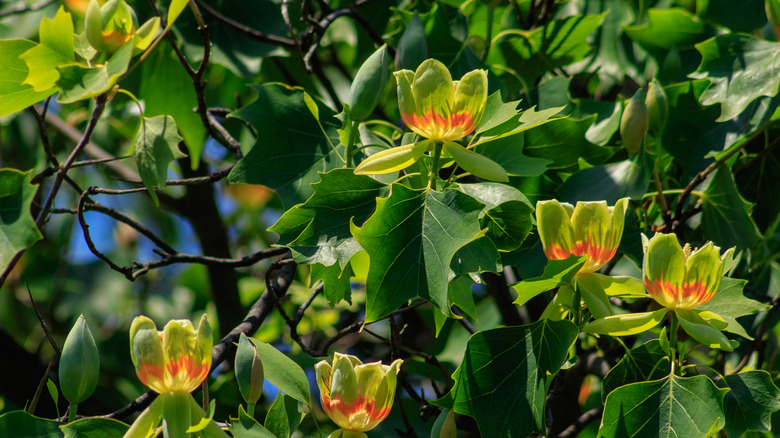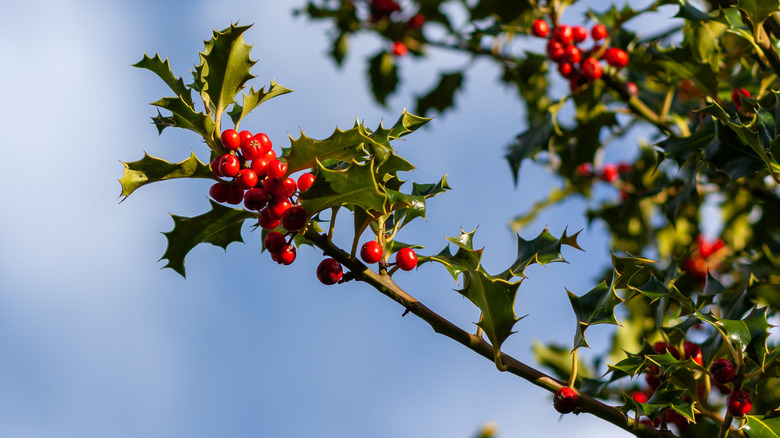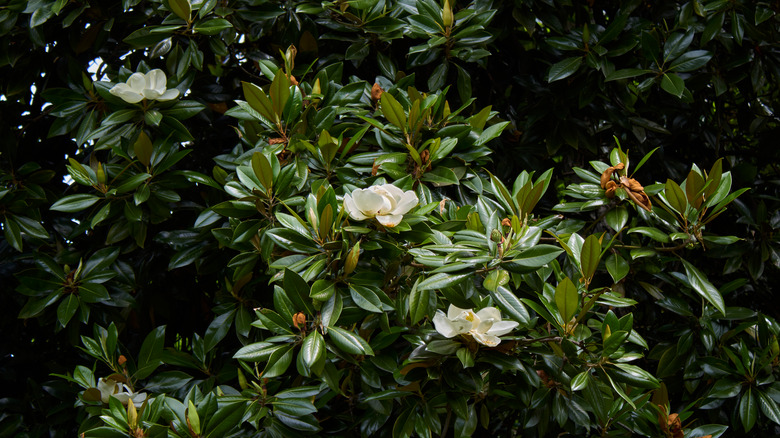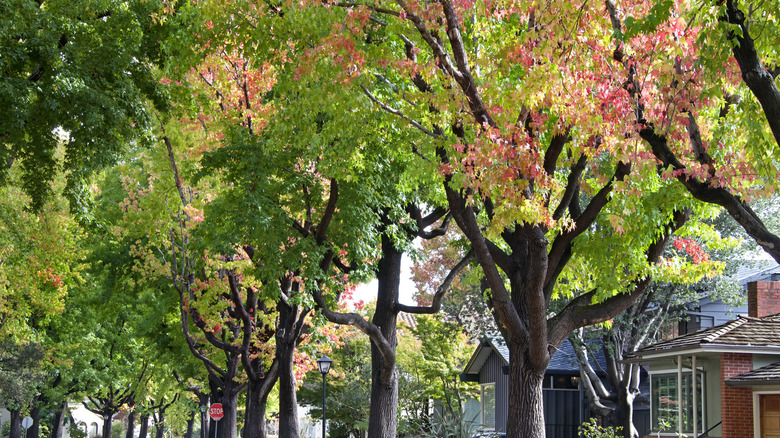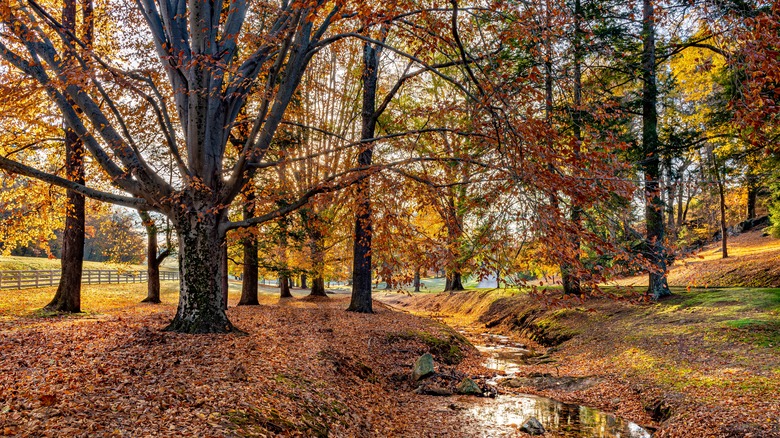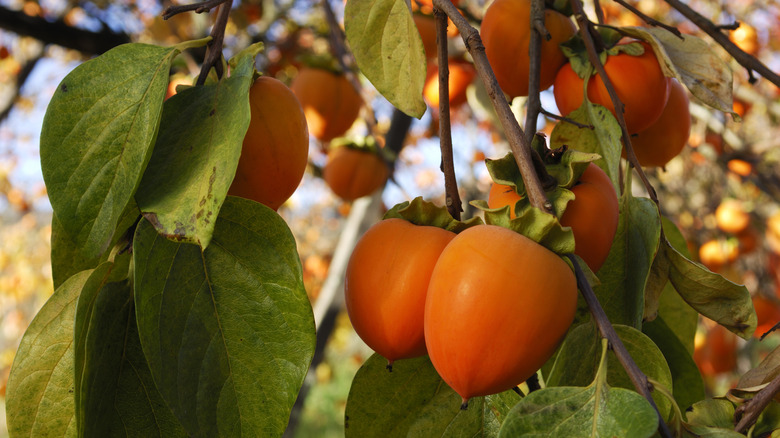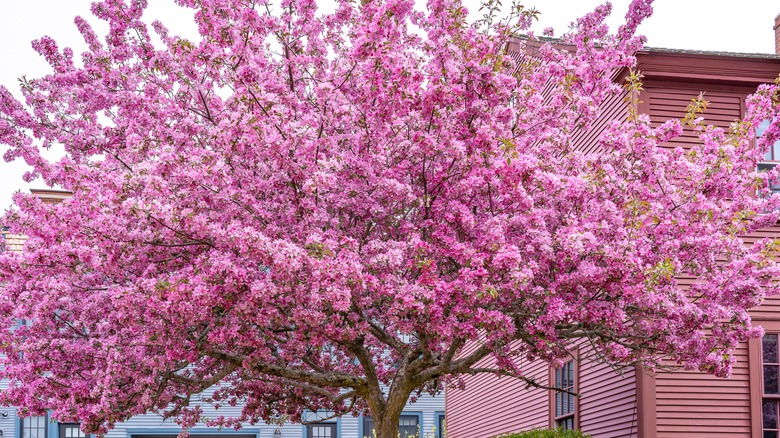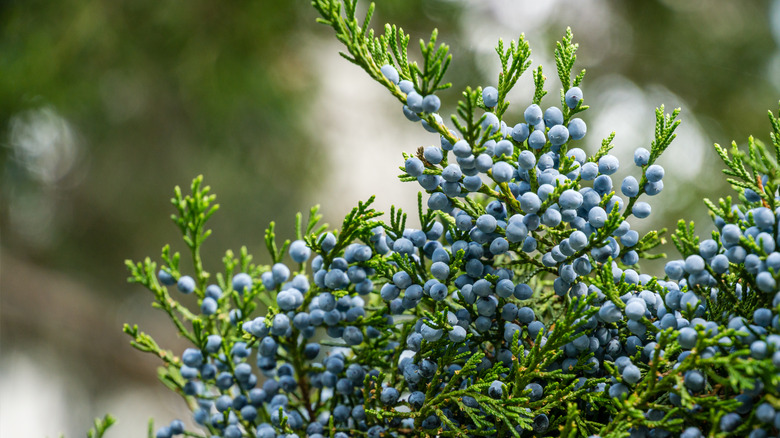18 Beautiful Trees That Can Survive In Extremely Windy Environments
If you live in an area that experiences hurricanes, tornadoes, snowstorms, or just the occasional windy night, you've likely seen a fallen tree that had been completely destroyed by wind. Falling trees can damage property, hit power lines that leave people without electricity, and even result in the loss of life. It's important to avoid planting these popular trees too close to your house, but planting wind-resistant trees might also prevent these catastrophes. Luckily, many beautiful trees also have deep roots and are proven to withstand high-wind environments.
A few factors will make any type of tree more or less resistant to wind. If there are any signs of disease or decay, even the heartiest tree can fall in bad weather. So you want the wood to be strong. Additionally, if a tree doesn't have enough room for its roots to spread, it won't develop the strong foundation it needs to survive in harsh conditions. It is common in urban areas for trees to be planted in cramped spaces that don't have enough room in the ground, both vertically and horizontally, for the tree to anchor fully. Certain species of trees can survive and even thrive in windy conditions if given room to grow. These trees are also beautiful and diverse. From sprawling branches to flowering varieties, these trees are gorgeous to look at and able to survive in extremely windy conditions.
Live oak
Oak trees are one of the most popular trees. They also happen to be one of the most wind-resistant. Live oaks, in particular, tolerate many soil and weather conditions, but they are also beneficial in the summer as their dense, wide canopy provides natural shade. Live oaks are slow-growing trees, taking about 20 years to reach maturity. However, a slow-growing tree is a strong one, and the live oak's deep roots and strong inner structure mean that if you plant one in your yard, it can survive years of heavy winds and be enjoyed for generations.
Dogwood
Dogwoods dot the landscape in the spring when their stark white flowers bloom, making the tree look like something out of a fantasy novel, but while its flowers look delicate, underneath lies a strong tree that can survive windy conditions. However, despite its hardiness to weather, it's extremely picky about soil quality and watering conditions. They are also very susceptible to disease. But if you are willing to deal with these factors, you will be rewarded with a tree that blooms beautifully in the spring and lasts throughout the hurricane season.
Crepe myrtles
Crepe myrtles are luscious trees that bloom brightly even in the summer heat, with blossoms ranging from white to purple. They are often found in urban or suburban areas due to their resilience. Because of their very hard wood and wide root zones that can grow up to three times the size of the canopy, they can withstand strong winds, even in coastal regions. The 'Acoma' and 'Centennial' selections can survive chillier winters. In contrast, the 'Tonto' and 'Catawba' varieties are best for a humid environment because of increased resistance to fungal damage.
Western sycamore
Sycamore trees are known for their distinct peeling bark that paints the tree in shades of white, gray, and tan. Native to California, it's easy to learn how to successfully grow sycamore trees. They can grow up to 100 feet tall and 50 feet wide if given enough room. As long as they have enough water, western sycamores can survive in a variety of soil types and high wind conditions. They are a beautiful addition to any landscape, with large leaves dotting the branches in the summer that change to deep shades of yellow in the fall.
Bald cypress
Despite the name, the bald cypress is a large tree with branches full of lush needles. In the fall, you're treated to a world of colors as they turn vivid shades of yellow and orange. The branches are made from strong, flexible wood, allowing them to move with the wind rather than remain too rigid and eventually snap off. If you live in a hurricane-prone area, the bald cypress is a perfect choice due to its ability to absorb large amounts of water in the event of flooding.
Norway maple
Maple trees are good for more than just syrup. They can withstand high winds, and the Norway maple is the heartiest of all. Most maple trees can grow in extreme conditions like drought, flooding, and high winds that would kill the surrounding trees, but the Norway maple will remain standing. These trees are magnificent in the autumn when their leaves change from green to yellow (or red, for other varieties), creating a cozy fall vibe. And if you want to try harvesting their sap to make your own syrup, well, that's an added bonus.
Douglas fir
While this is the perfect choice for a Christmas tree, it is a year-round beauty when planted in the yard. The trees in the ground will grow much taller than your regular Christmas tree, getting anywhere from 40 to 80 feet tall. But don't worry; their bottom-heavy cone shape prevents them from being knocked over even in high winds. The needles will stay green all year round as long as the soil remains damp, meaning if you plant one, you might need to water it during periods of drought.
Palm tree
With a slender trunk, you might think that a palm tree would be the first thing to snap in half during a brutal storm. However, they can withstand winds over 100 miles per hour. The palm tree's flexible core allows the trunk to bend in the wind without snapping. The small fronds at the top of the tree also increase the tree's wind resistance, helping the tree shed water while also being thin enough to let wind pass through. This reduces the force of the wind and rain and allows it to remain flexible with minimal damage.
Norway spruce
The Norway spruce is a strong yet flexible tree that is another popular choice for a Christmas decoration. The spiky needles differentiate them from other similar-looking trees. Like the Douglas Fir, the bottom-heavy triangle shape allows it to remain strong while being flexible in harsh weather. Due to its cone shape, water and snow slide right off, making it an excellent choice for cold climates. Given the right temperature and watering conditions, the Norway spruce is a gorgeous windbreaker tree that will keep its needles all year long.
Valley oak
With their soft, rounded leaves, valley oaks are the largest North American oaks, but still very wind-resistant. Their branches are long and grow irregularly, creating a sprawling, mysterious look. Like the live oak, they are fairly adaptable to different growing conditions but require more consistent water. They produce acorns, which drop in the fall, attracting a variety of wildlife, including birds and squirrels. In fact, many birds will be attracted to an oak tree, which is one of the trees most likely to attract blue jays.
Tulip tree
A tulip tree (also called a tulip poplar) sounds like something out of a children's book, but these trees are real (although still rather magical). Don't let their slender trunk fool you. They are solid and wind resistant due to how their stalks connect the leaves and stems to help deflect wind. However, you only get these benefits if the tree is well-pruned and slender. If it becomes overgrown, its chances of being damaged by a windstorm significantly increase. But if you keep things manicured, the tree provides beautiful spring blooms and colorful autumn leaves season after season.
American holly
Holly has many uses beyond being a festive decoration, and one of them is protecting from the wind. American holly is best known for the bright red holly berries that appear each autumn, but it's a beautiful tree year-round as it cycles through the delicate white spring blooms and shiny leaves of summer. Because it grows in a cone shape, it is bottom-heavy, making it much more resistant to windy environments. The wind whips in a circular pattern around the tree, making any potential damage much less likely.
Southern magnolia
Magnolias are some of the most beautiful flowers, and with a bit of care, you can ensure your magnolia tree's flower buds bloom year after year. Because these trees are often planted for aesthetics, it can be surprising to learn that they are one of the most wind-resistant trees out there. With a combination of thick, dense trunks and a triangle shape that allows the wind to move around it rather than through, they rarely suffer damage in a storm. They are best used as an attractive but effective barrier between the windy elements and your home.
American sweetgum
If you live in an area where tornadoes are common, then you likely have some American sweetgum trees in your neighborhood. They are known for being hardy enough to survive a tornado, thanks to their deep roots and short, stout branches. A sweetgum tree will likely have a much greater chance of survival during a storm event than its surrounding foliage. It's an easy tree to care for as long as you learn the best time of year to prune your sweetgum tree and how to prune it properly.
American beech
Despite being a slow grower, beech trees can grow extremely tall, from 50 to 80 feet tall. While impressive, they don't need to be that tall in your yard to reap all the benefits of this resilient tree. Thanks to its smooth, sturdy wood, they hold up well in windstorms and other extreme weather. They even retain their leaves throughout winter, making them a welcome sight amongst barren tree branches. Whether this is a pro or con is up to you, but they also produce beech nuts, which can be eaten by critters and humans alike.
Persimmon
While most fruit trees don't hold up the best in extreme wind, persimmon trees are fairly hearty when it comes to the elements. Even if the tree itself won't budge, the high wind will undoubtedly blow off all the persimmon fruits, so you will want to harvest those as soon as they are ripe to eat or turn into a delicious dessert. Not only will your persimmon tree survive the cold, but some folklore suggests that persimmon seeds can predict winter weather. Now, that's a fruit in tune with the seasons.
Eastern redbud
Blooming into a magical puff of pink, the eastern redbud is a vibrant tree that will bring stunning color to your landscape. It is smaller in stature than most on this list, with a relatively thin trunk and branches. While it will never be as wind resistant as a large, deep-rooted tree like an oak, among the smaller trees, it has proven itself to be the one most likely to survive, especially if other big trees surround it. It will attract lots of little wildlife like butterflies, bees, and songbirds, making your whole garden come alive.
Eastern red cedar
Another variation of cone-shaped trees that are particularly adept at handling windy conditions is the eastern red cedar. It can also tolerate wind, drought, and pollution. In the late fall, it will sprout blue juniper berries that will attract many birds and mammals looking to squeeze in a snack before winter. The open branches of the eastern red cedar can extend to the ground, providing great protection not just from the wind but also for birds looking to build their nests in a safe space.
